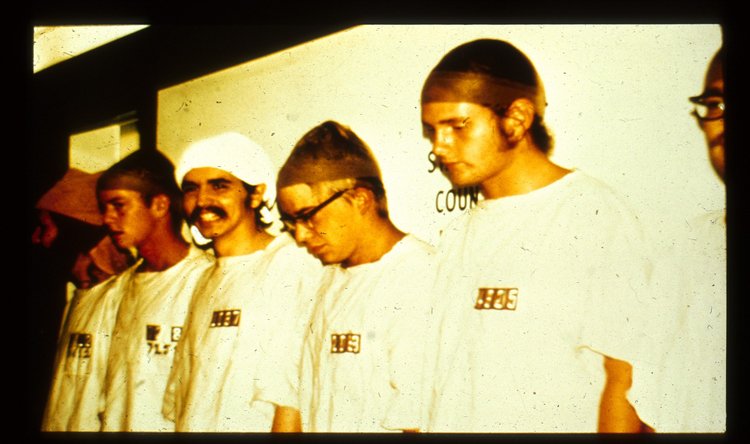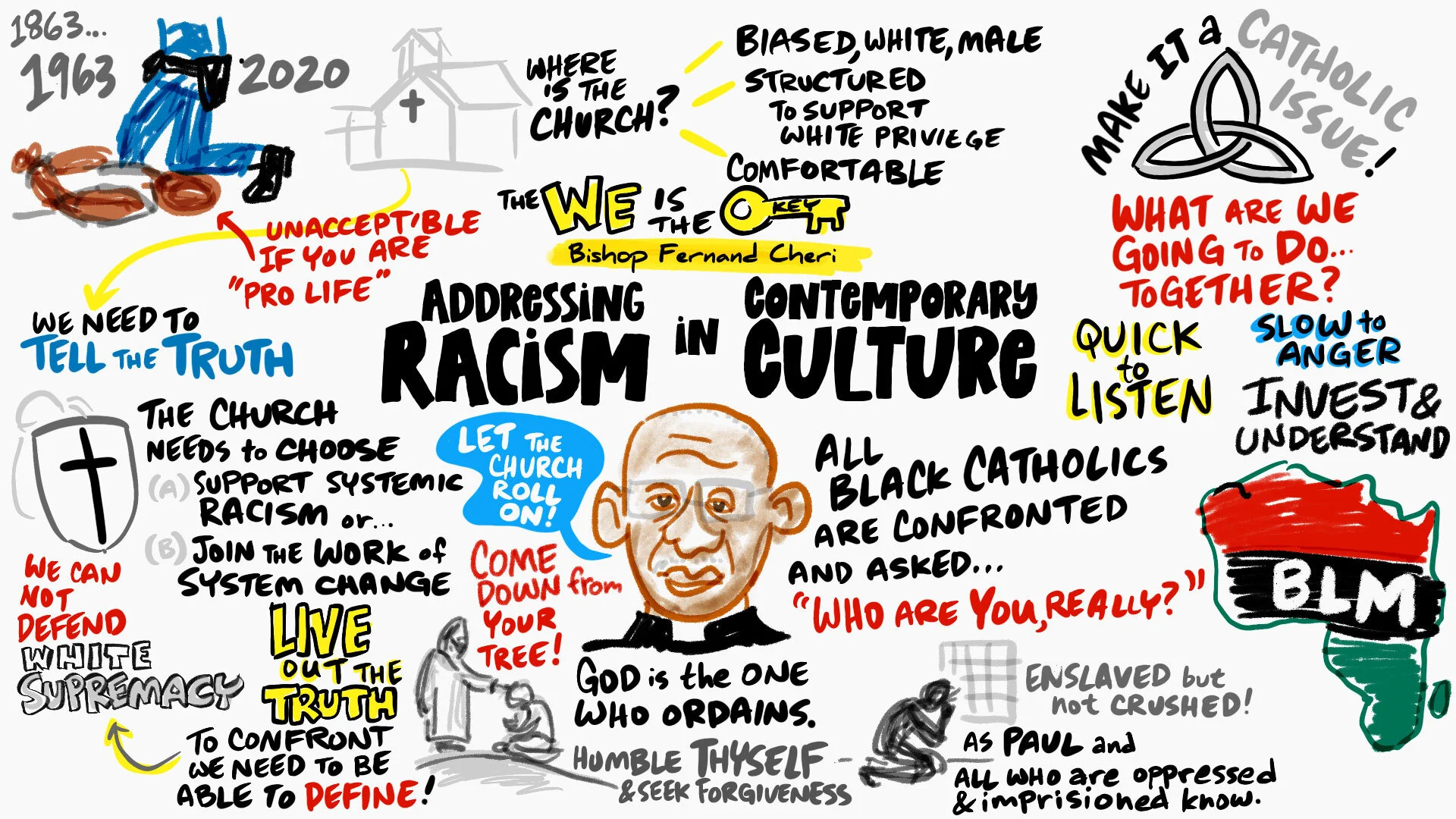Successfully Facilitating Tension and Conflict in Groups: Insights from Social Norms, Sympathetic Systems, and Polyvagal Theory
/DISCLAIMER: This article is about group facilitation in a typical, professional environment, not a clinical setting or an environment in which physical, psychological or emotional harm is a real and present threat.
Does facilitating a contentious group of workshop participants feel like being a cameraperson running through a dense rainforest during a chimp civil war? No doubt! Facilitating groups that are experiencing tension and conflict can be a challenging task.
I am a HUGE fan of the recent 4-part series Chimp Empire on Netflix. But, oh man! I totally got the cold sweats just watching.
This documentary — narrated by the inimitable Mahershala Ali — is on par with any Scorsese or Tarantino film in terms of dramatic tension and sudden violence. When watching the social hierarchy and gangster alliances form within the warring troupes of primates, I found myself saying: “Yep. That's where we get it from!”
Which leads me to ask...
Are unanticipated tensions and disagreements derailing your design or strategy workshops?
As a facilitator, guiding groups (of humans) through conflict and emotional distress is one of our most important and challenging roles.
While I am no trained clinician or mental health specialist, I have cobbled together some research and tips together (see below) which provides a framework for understanding group dynamics and proven strategies for navigating conflicts.
By understanding social norms, the biology of our sympathetic and parasympathetic systems, and applying lessons from polyvagal theory, facilitators can create a safe and productive space for resolving conflicts and promoting harmony within groups.
Norms, Baby, Norms!
Social norms are unwritten rules of behavior based on what is considered normal or expected within a certain group. These norms can significantly impact group members' behavior and evolve over time. Descriptive norms, perceived norms, and injunctive norms play significant roles in shaping behavior within a group. Here’s a basic distinction:
Descriptive norms describes how you think people actually behave. (assumptions)
Perceived norms describes how you witness people actually behaving. (direct observation)
Injunctive norms is how you think people feel about a behavior. (assumptions re: values, beliefs, opinions of others)
Facilitators can recognize—and call out—the power of norms in influencing group dynamics and utilize strategies to promote positive norms such as pattern disruption, nonviolence, inclusivity, and cooperation.
One of the most infamous and oft-cited research studies to explore these malleable norms is the 1971 Stanford Prison Experiment (SPE).
Volunteers selected to be "guards" were given uniforms specifically to de-individuate them, and instructed to prevent prisoners from escaping. Over the following five days, psychological abuse of the prisoners by the "guards" became increasingly brutal and the study had to be shut down early. SPE has been referenced and critiqued as one of the most unethical psychology experiments in history.
The harm inflicted on the participants prompted universities worldwide to improve their ethics requirements for human subjects of experiments to prevent them from being similarly harmed. Other researchers have found it difficult to reproduce the study, especially given those constraints.
The flawed and controversial study did, however, elevate societal awareness that many “normal” citizens will adapt their behavior in extreme ways when the social norms of their environment are altered.
Become a Biological Guru
Do your clients ever seem to emotionally shut down or dissociate during difficult discussions or experiences in your sessions? Polyvagal theory provides a scientific explanation for why this happens and gives practical strategies for helping people re-engage.
Whether you facilitate personal growth groups, addiction recovery programs or lead corporate teams through change, this helpful episode of the Psychiatry Podcast/Psychotherapy Podcast may provide actionable and compassionate actions to support your participants through their most vulnerable moments.
Understanding that our sympathetic and parasympathetic systems play a crucial role in our responses to tension and conflict is an important tool.
The sympathetic system activates our fight-or-flight response, which can heighten tensions and escalate conflicts.
On the other hand, the parasympathetic system helps us regulate emotions and promotes a sense of safety and connection.
And, the science behind fight, flight and freeze responses continues to evolve.
Poly-what now?
Polyvagal theory describes how our nervous system has three responses to stress: social engagement (normal state), fight or flight (anxious state), and shutdown (dissociation).
Developed by Dr. Stephen Porges, the theory offers further insights into our physiological responses during social interactions and conflict situations. According to this Porges, our autonomic nervous system plays a significant role in regulating our social engagement and emotional states.
(For a deeper dive into the science, read Porges’ 2007 paper, The Polyvegal Perspective, cited over 2000 times by other researchers.)
Understanding the different states of the autonomic nervous system, such as ventral vagal, sympathetic, and dorsal vagal, can help facilitators create an environment that promotes safety, connection, and effective communication within groups.
When people perceive a threat, their nervous system can activate the fight or flight response. If that doesn't work to escape danger, the body goes into shutdown mode by decreasing heart rate, blood pressure, and awareness to survive.
This is known as dissociation, defined as “the separation of some aspects of mental functioning from conscious awareness, leading to a degree of mental dysfunction or to mental conditions including dissociative identity disorder.”
Also known as shutdown.
The good news is we can help clients come out of shutdown by:
Building a trusting relationship. Address the effect of past events or conditions (aka “past trauma”) on current group dynamics only when the client is ready.
Know your depth and be clear on your role. If your role is as a facilitator of a design process (vs. an expert in organizational psychology) be super clear on what you are and are not qualified to handle. Provide a mechanism to capture important issues that are out of scope for the workshop (ex. a “Parking Lot” or “Important Issues” type list).
Staying calm and present yourself. Mirror neurons in the brain allow us to feel what others feel, so remain grounded.
Letting the client lead. Don't prompt them to discuss anything they aren't bringing up themselves.
Normalizing their response. Explain that going into shutdown was their body's way of protecting them, even if it's overactive now. This reduces shame.
Helping them find their anger. Anger shows us where our boundaries were crossed and gives us energy to overcome obstacles. Even a small expression of anger can help.
Introducing slow, mindful movement. Have clients slowly move in ways they wanted to during the traumatic event. This reconnects their body and mind.
Practicing assertiveness. Help clients feel more in control of their responses and safer in relationships.
Recommend breath work, mindfulness, yoga. These techniques increase awareness and connection to the present moment.
Applying these Insights in Group Facilitation
Successfully facilitating groups experiencing tension and conflict requires a basic understanding of social norms plus the biology of our autonomic systems and neural pathways.
By creating an environment that promotes positive norms, fosters safety and connection, and encourages perspective-taking and empathy, facilitators can guide groups towards resolving conflicts and cultivating harmonious relationships.
Recognize the Power of Norms: Facilitators should be aware of the influence of social norms within a group. By promoting positive norms through engaging with norm referents (respected leaders or influential group members), facilitators can set the tone for nonviolence, inclusivity, and cooperation.
Foster Safety and Connection: Creating a sense of safety is crucial for resolving conflicts within a group. Facilitators can encourage activities that activate the ventral vagal system, such as deep breathing exercises, grounding techniques, and active listening, to promote emotional regulation and build trust among group members.
Encourage Perspective-Taking and Empathy: By helping group members understand and appreciate alternative perspectives through activities like role-playing or guided discussions, facilitators can foster empathy and reduce hostility. This can promote a more nuanced understanding of the issues at hand and lead to constructive dialogue.
Address Misconceptions and Shift Norms: Facilitators should actively challenge and correct negative norms that contribute to tension and conflict. Communicating positive norms through examples of positive behavior and highlighting the rejection of harmful behaviors can help reshape group dynamics.
Provide Tools for Conflict Resolution: Equipping group members with effective conflict resolution skills, such as active listening, respectful communication, and mediation techniques, can empower them to address conflicts constructively and find mutually beneficial solutions.
Utilizing these strategies, conflict can become an opportunity for growth, understanding, and positive change within groups.
REFERENCES
The Polyvagal Perspective (Porges, 2007) - https://europepmc.org/backend/ptpmcrender.fcgi?accid=PMC1868418&blobtype=pdf
The Official Stanford Prison Experiment Website - https://www.prisonexp.org/
Psychiatry Podcast/Psychotherapy Podcast. Episode 023: Emotional Shutdown - Understanding Polyvagal Theory - https://www.psychiatrypodcast.com/psychiatry-psychotherapy-podcast/polyvagal-theory-understanding-emotional-shutdown
Over Zero article on social norms in understanding violence prevention: https://overzero.ghost.io/publishing-options/
More on how movement and body awareness can help: https://somaticmovementcenter.com/what-is-polyvagal-theory/









